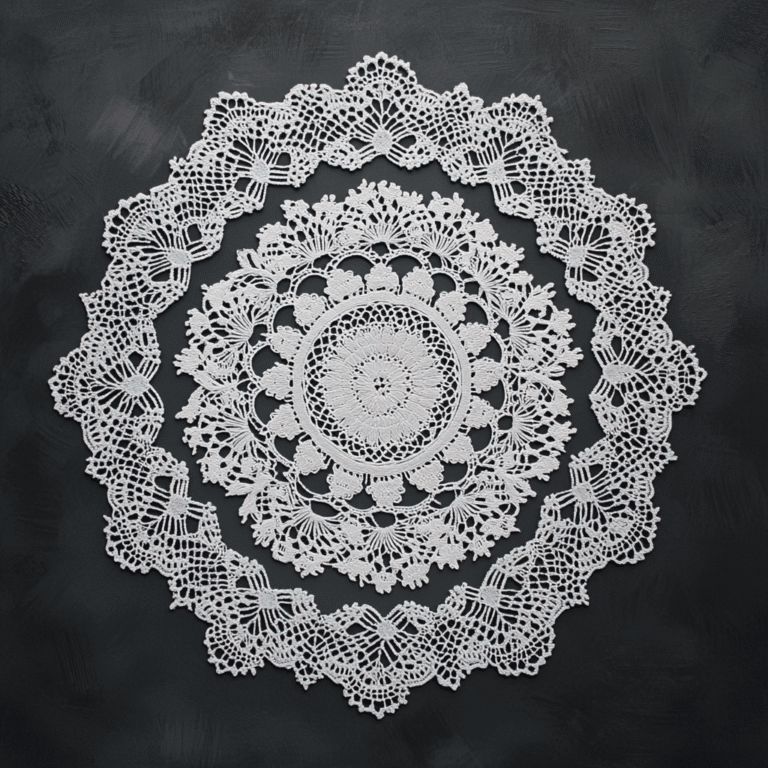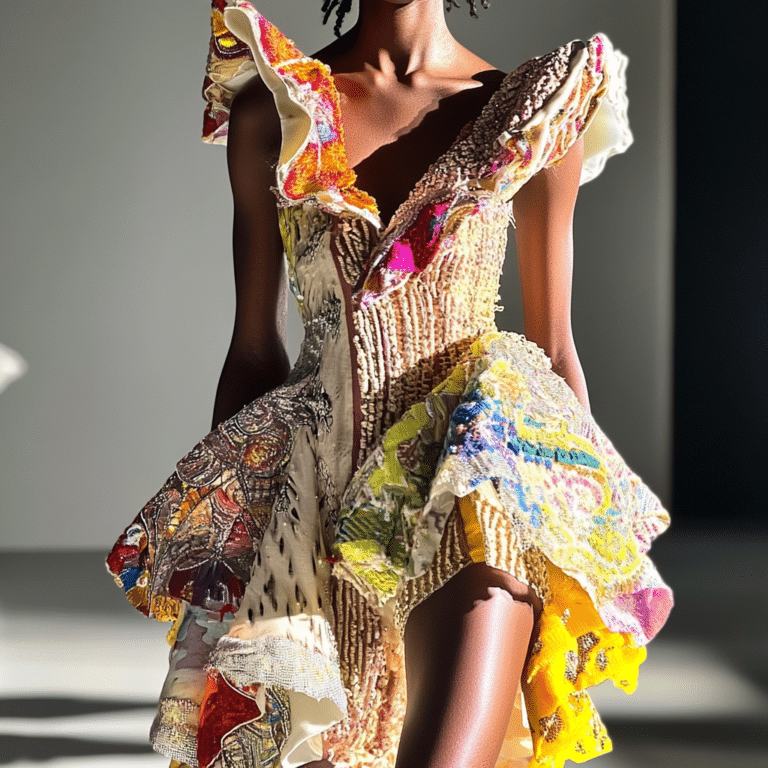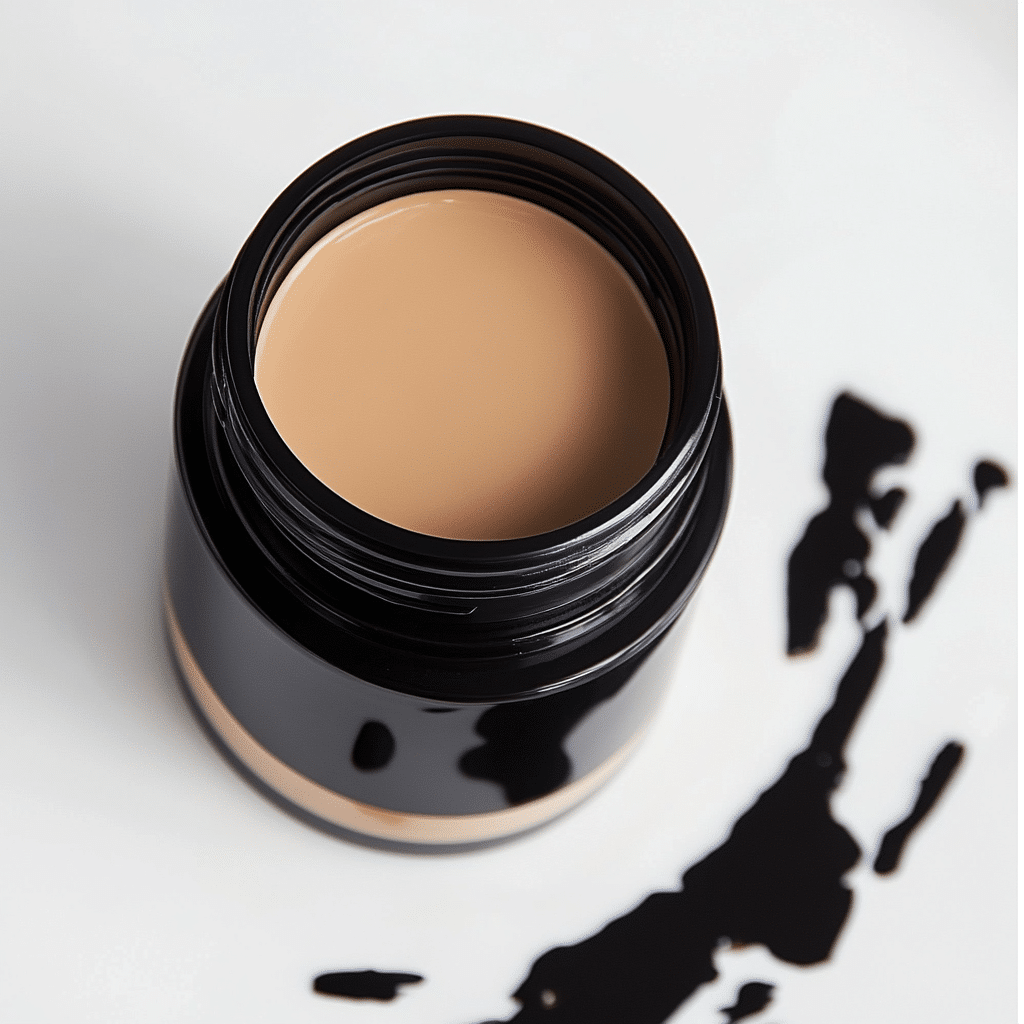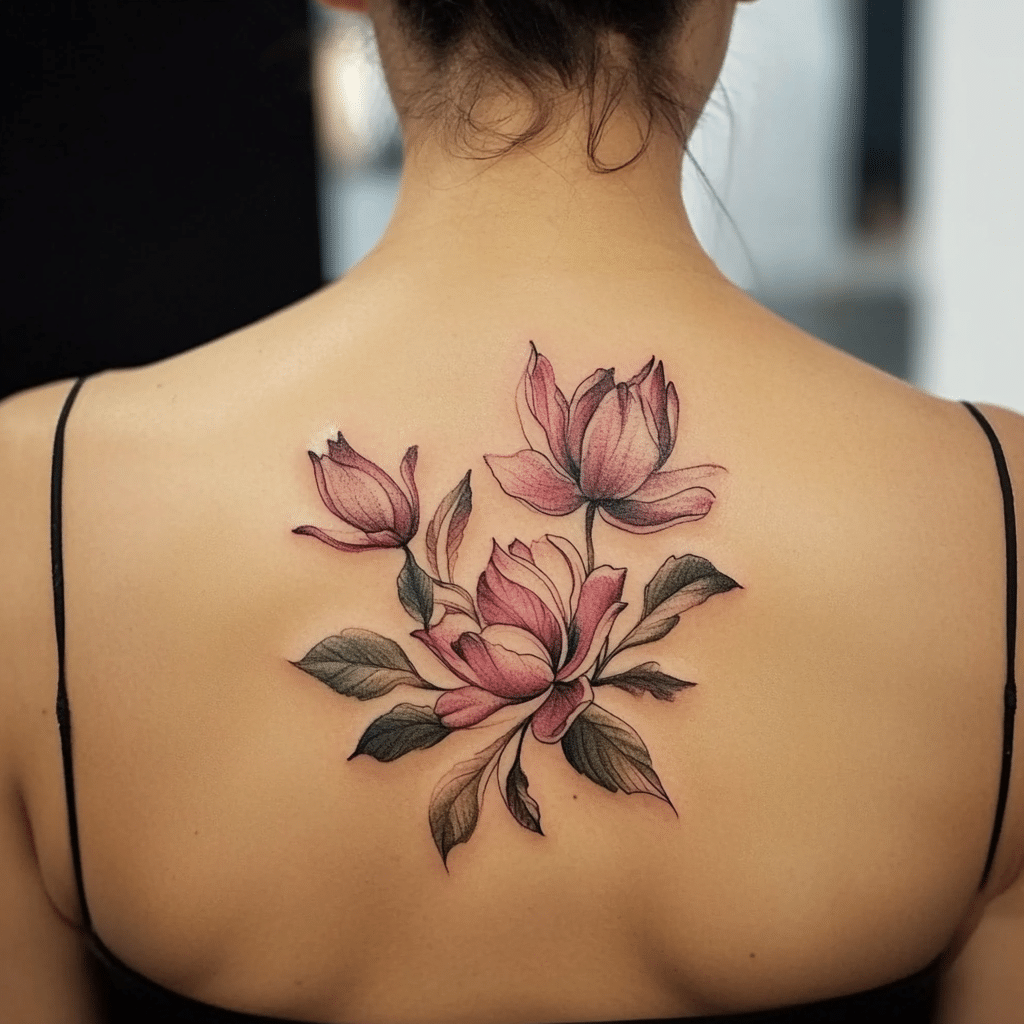Let’s dish, darling readers, for today I’m whisking you away on a design escapade to explore the magnetic allure of Japandi—a blend so effortlessly chic, it’s like the Audrey Hepburn of interior styles. A little bit Japanese zen, a dash of Scandinavian hygge, and voilà, you’re living in a space that breathes understated luxury. So grab a cup of artisanal coffee—or is it matcha tea, today?—as we sift through the five secrets to achieving stunning Japandi interiors. Trust me, by the end of this, you’ll be ready to declutter your life and mind faster than you can say ‘konichiwa.’
The Harmony of Japandi: Where Japan Meets Scandinavia
Whoever thought to mix the minimalist magic of Japan with the cozy charm of Scandinavia deserves a standing ovation—or at least a very stylishly curated room in their honor. Japandi, my fashion-forward friends, is not merely a trend, it’s a design dialect spoken fluently in the homes of those who adore a clean line and a snug throw pillow. It whispers the ancient Japanese philosophy of wabi-sabi with the Scandinavian ritual of hygge, and oh, doesn’t it just resonate with the soul?
This fusion didn’t just pop up over a latte talk, no sir. It brewed slowly, steeping traditional Japanese aesthetics with those time-honored Scandinavian values. Imagine the lovechild of bonsai trees and blonde wood, and you’ve got the Japandi gist. It boasts both the scandi-can-do approach of functionality and the Japanese calm of uncluttered spaces. So think of this as your fashion runway for home decor—where less is definitely more, and simplicity steals the spotlight.
EDISHINE Wooden Corner Floor Lamp, Sleek Dimmable LED Atmosphere Lamp, Minimalist Standing Mood Lighting for Living Room, Bedroom, Studio, Office, K Warm Light,
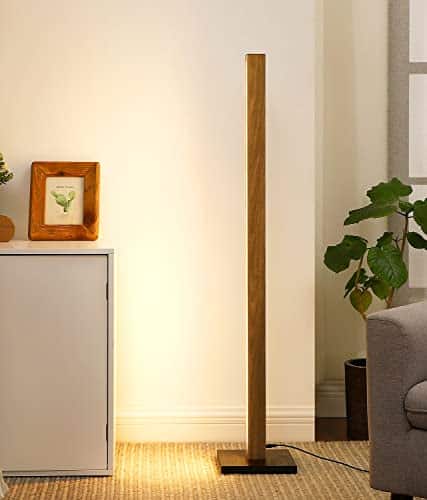
$55.99
The EDISHINE Wooden Corner Floor Lamp exemplifies elegance and sophistication in lighting design, creating an inviting atmosphere in any room of your home or office. Crafted with a natural wooden base that fits snugly into any corner, the sleek vertical structure offers both space-saving functionality and a contemporary aesthetic. This minimalist mood lighting piece emits a soft, warm glow of 3000K, providing just the right amount of light to transform your living room, bedroom, or studio into a serene retreat. Topped by an energy-efficient LED light that highlights its eco-friendly appeal, the lamp stands as a testament to modern, subtle style.
With its built-in dimming capabilities, the EDISHINE Wooden Corner Floor Lamp allows for a customized lighting experience to suit any mood or occasion. A simple touch control located conveniently on the body of the lamp makes it effortless to adjust brightness levels from a radiant shine to a gentle flicker. Engineered to offer a wide range of lighting intensities, the lamp is perfect for dynamic lighting scenes, ranging from a cozy reading nook to an illuminating centerpiece for social gatherings. Its superior LED technology ensures that it provides not just versatile lighting, but also long-lasting performance with reduced energy consumption.
Installation of this exquisite floor lamp is a breeze, making it an ideal choice for both the style-conscious and the practical-minded consumer. The sophisticated design blends seamlessly with a variety of decor themes, from minimalist to modern to Scandinavian-inspired interiors. Not only does the EDISHINE Wooden Corner Floor Lamp radiate a captivating K warm light to enhance your space, but it also stands as a striking piece of art, enriching the overall ambiance of any environment it graces. Its unique combination of functionality, design, and energy efficiency makes it an exceptional addition to both private and professional settings.
The Zen of Open Spaces: Maximizing Japandi Minimalism
Ah, the minimalistic mantra of Japandi: “Clear your clutter, clear your mind.” Think airy, spacious, and light-filled interiors, where each piece of furniture can literally—and figuratively—breathe. Take a page out of designer Kumi Aso’s book, where a sofa isn’t just a sofa; darling, it’s a statement of space. Or glance over at a room by Erik Olsson, where nothing screams louder than the whisper of an open-plan living.
Ever try to dance in a cramped closet? Neither have Japandi enthusiasts. Maximizing space is about letting your interiors waltz with ease. We’re talking about homes where coffee tables do more than just rest your latte; they double as art installations. And let me let you in on a secret—embracing Japandi minimalism isn’t just for the Marie Kondo loyalists; it’s for anyone who craves a life sans the chaos of clutter.

| Aspect | Description |
|---|---|
| Origin | Blend of Japanese and Scandinavian design philosophies. |
| Philosophy | Combination of Japanese wabi-sabi (imperfect, impermanent, and incomplete beauty) and Scandinavian hygge (comfort). |
| Design Principles | – Simplicity and minimalism. – Functionality. – Natural materials. – Quality over quantity. |
| Color Palette | Mostly neutral with warm undertones to create a calming atmosphere. |
| Materials | Eco-friendly, sustainable, often locally sourced (wood, bamboo, wool, paper, etc.). |
| Furniture | Practical, simple, with clean lines; multifunctional pieces. |
| Decor Technique | Decluttered spaces with selected sentimental items. Purposeful design, no excess. |
| Key Features | – Emphasis on natural light. – Blending of indoor and outdoor spaces. – Textural contrasts. |
| Sustainability | Focus on long-lasting design, repurposing, and renewable resources. |
| Trends | Rising popularity due to eco-friendly and mindful living trends. |
| Historical Roots | Not a new trend; origins go back to the long-standing traditions of both Japanese and Scandinavian interiors. |
The Palette of Serenity: Japandi’s Color Confidence
Do you know what the color ‘calm’ looks like? In the world of Japandi, it’s about as zen as a meditation session in the fjords. The right shades are the oomph behind this style’s soft-spoken grace. Imagine the muted sophistication of Farrow & Ball’s Elephant’s Breath accentuated with the grounded hues from Nippon Paint and you’re right in Japandi territory. These aren’t just walls; they’re canvases that exude tranquility.
When color consultants preach about ‘serenity now,’ they’re possibly dreaming in Japandi. Here, it’s all about soothing earth tones that make you want to wrap yourself up in a blanket of design-led comfort. No need for shouty colors; Japandi’s palette is like the gentle pat of a cashmere throw on a winter’s evening—utter bliss.
Crafting Comfort: Japandi Furniture Selections
In a Japandi abode, it’s not about the furniture you choose; it’s also about the stories they tell. You won’t find mass-produced pieces here, dearies. Instead, think of the Nendo collection for IKEA, where function cuddles up with form. Or envision the craftsmanship of Gustav Westman, whose minimalist, yet cozy creations look as though they’re hugging your space.
The secret sauce to Japandi furniture is a combo of Japanese handiwork and Scandinavian durability. We’re coveting natural woods that feel like they’ve lived a thousand hygge-filled lives, yet still stand sturdy and eager for a thousand more. You want pieces that don’t just fill a space—they enrich it, they live with you, like a well-loved levis 501.
Modway Render id Century Modern Sideboard Buffet Table or TV Stand in Oak
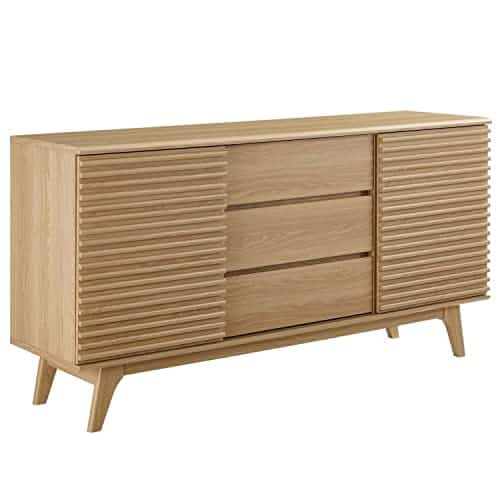
$364.77
The Modway Render Mid-Century Modern Sideboard Buffet Table or TV Stand in Oak embodies the timeless aesthetic of mid-century design, bringing both style and functionality to contemporary living spaces. This versatile piece of furniture, crafted from high-quality materials, boasts a sturdy construction with a warm oak veneer that lends a natural, inviting feel to any room it graces. Its clean lines and minimalist silhouette are accentuated by a smooth, durable finish that both highlights the wood’s natural grain and makes for easy cleaning and maintenance.
Perfectly sized for versatility, the Modway Render sideboard can serve as an elegant buffet table in the dining room or a sleek TV stand in the living room. It features a spacious top surface area that readily accommodates a large television, decorative items, or a variety of dining essentials. On both sides of the central compartment, sliding panel doors reveal adjustable shelves offering ample storage for electronics, media, tableware, or other household items, while cutouts at the back ensure cables are tidy and out of sight.
Attention to detail is evident in the design’s subtle touches, like the splayed legs and genuine metal hardware, which add to the piece’s retro charm without sacrificing modern-day practicality. The Modway Render Sideboard strikes the perfect balance between nostalgic design and contemporary living, making it an ideal addition to any interior looking for a touch of mid-century flair mixed with modern sensibility. Its blend of form and function will appeal to those who appreciate both design integrity and the demands of daily life.
The Delicate Dance of Light and Shadow in Japandi Spaces
Now, honeys, listen up—lighting in Japandi is no side dish, it’s the main course. We’re not just slapping on a lampshade and calling it a day; we’re crafting an atmosphere. It’s a play of light and shadow, with pieces from Muuto setting the scene for a soft luminescence, while Yamagiwa’s lighting design choreographs a ballet of shadows that adds depth and drama.
Let’s not forget that in a Japandi household, natural lighting is the diva. Architectural elements that invite in sunlight are key. Windows are the unsung heroes, cascading light in all the right spots, causing even the dullest of vases to shine like the lead in a Broadway showstopper.

Infusing Nature into the Home: Japandi’s Biophilic Elements
You can’t spell Japandi without whispering ‘nature’. And darling, it’s more than just a trendy fig tree in the corner; it’s a dialogue with the environment. Think biophilia but with a touch more zen. All fabrics are eco-conscious gemstones, and items like TOTO’s fixtures and Green Mood’s botanical walls are like green smoothies for the soul—refreshing and oh-so nourishing.
The elegance of a Japandi room is lined with the philosophy of Feng Shui, where every succulent and stone is placed not only for aesthetics but for serenity—and let’s not underestimate the happiness a well-planted bonsai can bring. When your home hugs you back with green fingers, you’re in the right design forest.
The Ritual of Maintenance: Preserving the Beauty of Japandi
Fashionistas and homemakers, alike, know that maintaining the Japandi look is much like taking care of a silk scarf—both require a delicate touch. The spaces are clean and the mood is tranquil, but it’s the routine upkeep that keeps the clutter at bay and sustainability at the fore. Here, cleaning becomes a holy ritual, almost as satisfying as finding the perfect men cowboy Boots for that stunning, yet understable outfit.
Talk to the decluttering priestess, Marie Kondo, and she’ll convert you to the gospel of “everything in its place”—a mantra as vital in Japandi as mastering the perfect cat-eye. It’s not just about the initial purge; it’s about a continual commitment to this serene and earthy elegance.
Meditation Floor Pillow Set of , Square Large Pillows Seating for Adults, Tufted Corduroy Floor Cushion for Living Room Tatami, Coffee Brown xInch
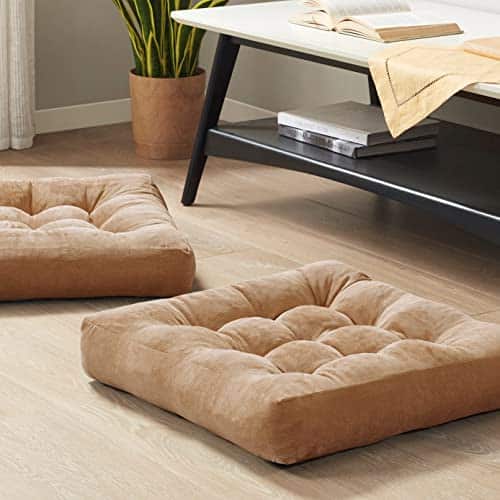
$49.99
Inject a touch of zen into your living space with this Meditation Floor Pillow Set, crafted for those who crave harmony and comfort in their daily lives. This set of square, large pillows is meticulously designed to provide ample seating for adults, allowing for extended periods of meditation or relaxation without discomfort. Each pillow is sized generously, providing a breadth of space for a variety of seating positions, ensuring that your focus can remain on mindfulness rather than adjusting your posture. The plush tufted corduroy material in an inviting coffee brown hue not only adds a layer of luxe coziness but also seamlessly blends with a wide array of interior palettes, enhancing the aesthetic appeal of your living room or meditation space.
Experience the perfect balance of firm support and luxurious softness with each pillow in this Meditation Floor Cushion Set. The tufting detail is not only a chic addition but also aids in maintaining the shape of the pillow, resisting flattening over time, even with heavy use. The durable corduroy fabric stands up to the rigors of daily use, making it an ideal choice for bustling households. Whether used for yoga practice, as a comfy footrest, or as additional seating for guests, these pillows remain both functional and visually appealing.
Effortless care complements the thoughtful design of this Tatami-inspired floor cushion set, ensuring that maintaining them is as serene as using them. The rich, coffee brown color is not only stylish but practical, concealing everyday wear while emanating warmth and elegance. These cushions can effortlessly transition from your living room floor to the centerpiece of a casual gathering, versatile in their utility. Revel in the simplicity and tranquility that this Meditation Floor Pillow Set brings into your home, creating an oasis of calm where you can unwind, recharge, and find your inner peace.
Conclusion: The Enduring Appeal of Japandi
So where does this leave us, dears, as we bid goodbye to the land of Japandi? Is it a fleeting love affair, or is it a timeless romance? With roots that burrow deep into cultural soils and branches that reach out to the future of design sustainability, Japandi isn’t just enduring; it’s flourishing.
Now, as our journey comes to a chic end, let’s toast to possibly inviting this mashup of solace and style into our own quarters. Embrace these pearls of Japandi wisdom, and watch your space transform into a masterpiece of 50s fashion—timeless, elegant, and ever so vogue.
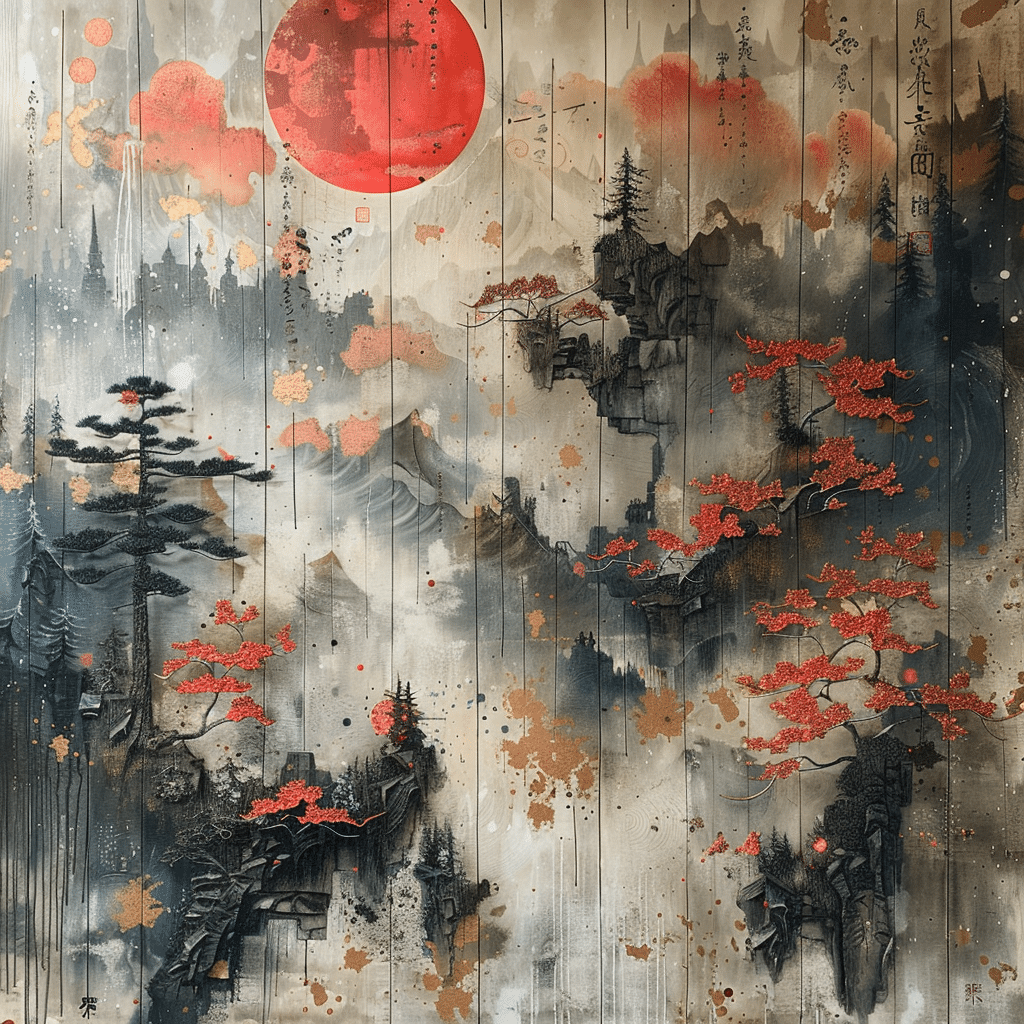
There you have it, lovelies. Remember, it’s not about decking every inch; it’s about adorning with intent. Like any decent Gloria bell, Japandi chimes with personal harmony and effortless poise. So go forth, decorate with soul, live with simplicity, and let the serenity trickle in. After all, isn’t a splendid home the truest extension of one’s exceptional taste?
The Joys of Japandi Interiors
Ever found yourself in a room where every detail felt like a warm hug for the soul? That, my friends, is the magic of Japandi interiors. They whisk you off to a world where Japanese minimalism weds Scandinavian functionality. It’s like transformer your home into a serene sanctuary that’s equal parts cozy and poetically simple. Let’s dive into some intriguing facts that showcase why Japandi style is the new darling of the design world.
A Zen Approach to Clutter
Alright, picture this: You’re wading through your belongings, thinking you might need “Kondo-ing” to sort your life out. But in a Japandi-inspired space, clutter is a no-go. The philosophy here is less is more—a mash-up of Scandi’s “hygge” (the art of coziness) and Japan’s “wabi-sabi” (finding beauty in imperfection).
Now, imagine looking for sleek storage to keep that minimalist vibe going. You’re on track, but your wallet’s giving you the side-eye. Good news! Scoring some stylish décor online doesn’t mean you have to break the bank. In fact, you can snag yourself a loan to keep the dream alive, even if your credit past is a bit spotty. Need a lifeline? An online Loans For bad credit Guaranteed approval might just be your ticket to creating that clutter-free haven.
Illuminating Japandi Moments
Lighting is the unsung hero in the Japandi playbook. Think of it as the lyrical verse that sets the tone. The design strategy pulls natural light front and center, using it to paint every corner with a warm glow. Now, pair that with some delicate paper lanterns or earthy-toned lamps, and boom—you’re not just lighting a room; you’re composing an ambiance that could give last night’s sunset a run for its money. Much like the last night Morgan wallen Lyrics that echo the sweet nostalgia, Japandi lighting creates a poetic interplay of shadows and luminescence that’s always Instagram-ready.
Cultural Harmony in Your Living Room
If you ever thought your love for different cultures couldn’t coalesce in one space, Japandi’s here to prove you wrong. This design trend is basically a cultural handshake—a ‘How do you do?’ between Nordic practicality and Japanese elegance. There’s something so fundamentally harmonious about it, don’t you think?
Getting to know the ethos behind Japandi can also be a gateway to understanding cultural nuances. Take, for instance, the term ‘anti-semitic,’ a word fraught with historical and societal implications. Knowledge is power, so learning about such terms, including their anti semitic meaning in hindi, is essential in becoming a well-rounded, empathetic individual, much like how Japandi blends diverse aesthetics to create an empathetic space.
Furniture that Tells a Story
In the cosmos of Japandi, furniture isn’t just a utility. These pieces are like silent protagonists in a beautifully directed Italian movie a beautiful life. The selection is deliberate, often featuring low-slung pieces that echo Japanese furnishings, complemented by the clean lines cherished by Scandinavian design. Each piece tells its story through natural materials and impeccable craftsmanship, turning your living space into an Oscar-worthy set.
And there you have it, folks—a snapshot into the world of Japandi where every detail counts, and every moment is a crafted experience. Delve into this design trend and watch as your home transforms into a storybook of style and serenity.
Walker Edison Sibu Japandi Minimalist Coffee Table, Inch, English Oak
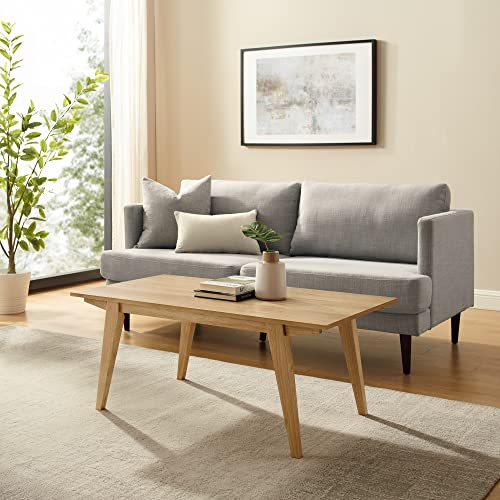
$127.99
Infuse your living space with the serenity and simplicity of the Walker Edison Sibu Japandi Minimalist Coffee Table. Expertly blending Japanese minimalism with Scandinavian functionality, this piece embodies the Japandi design philosophy, featuring clean lines, a warm English Oak finish, and a commitment to practical elegance. The spacious tabletop provides ample room for your magazines, decor, and beverages, allowing for a clutter-free zone that is both inviting and stylish. Made with high-grade MDF and a durable laminate, the table promises longevity while exuding an organic, understated appeal.
Aesthetic versatility is a standout feature of the Walker Edison Sibu Japandi coffee table, making it a perfect fit for various decor styles including mid-century modern, contemporary, and of course, Japandi-inspired interiors. The open design under the tabletop enhances the feeling of space in your room and offers additional storage for books and baskets. Its sturdy construction is underpinned by tapered legs that not only provide stability but also contribute to its sleek profile. The neutral tone of the English Oak finish ensures that this piece can integrate seamlessly into any color scheme, enriching your home with a touch of nature-inspired tranquility.
Assembling the Walker Edison Sibu Japandi coffee table is a breeze, with all hardware and instructions provided to ensure a smooth setup process. The table’s dimensions are tailored to balance functionality and form, comfortably fitting into both smaller apartments and larger homes alike. The resistant surface makes maintenance easy, handling daily wear and tear without compromising its beauty. This coffee table does not only anchor your living space with its charming aesthetic but also promises a durability that will see it become a staple in your home for years to come.
What is the concept of Japandi?
– What is the concept of Japandi?
Oh boy, Japandi’s a real game-changer for your living space! Imagine a scrumptious combo of comfy ‘hygge’ vibes from Scandinavia and the zen-like simplicity of Japanese aesthetics—it’s like peanut butter and jelly for interior design! Japandi is all about savoring the slow life, coziness, and just the right amount of stuff that means something to ya. It’s simple, sustainable, and, dare we say, soothing for the soul.
What are the rules of Japandi style?
– What are the rules of Japandi style?
Alright, listen up! The Japandi style has rules that are more like friendly suggestions for living your best life at home. Keep it clutter-free, folks—less is definitely more here. Go for eco-friendly materials that Mother Nature would give a thumbs up to. Function over frills, please—every item should earn its keep. And let’s not forget a neutral color palette that’s as calming as a cup of tea on a rainy day. Remember, it’s all about the love for the few things you’ve got, not the lust for more.
Why is Japandi so popular?
– Why is Japandi so popular?
Well, you see, Japandi’s got fans all over the place ’cause it hits the sweet spot between Zen and cozy. It’s like that perfect slice of cake—it’s simple, sustainable, and feels like a breath of fresh air with all the natural materials and pared-back design. People are gobbling up the Japandi vibes faster than free samples at the grocery store because, let’s face it, who doesn’t want a home that’s a sanctuary in today’s go-go-go world?
Is Japandi a fad?
– Is Japandi a fad?
Nah, don’t you worry—Japandi isn’t just some flash-in-the-pan fad that’ll vanish like yesterday’s leftovers. It’s got roots deeper than a granddaddy oak tree, pulling from centuries of Japanese and Scandinavian design smarts. This style is sticking around like that song you can’t get outta your head—because it’s timeless, not trendy.
Is Japandi style expensive?
– Is Japandi style expensive?
Well, here’s the lowdown: Japandi can be as pricey or budget-friendly as you make it. Sure, if you’re chasing after top-shelf, eco-conscious pieces, your wallet might feel a pinch. But the beauty of Japandi is it’s all about value in simplicity and personal meaning, so you can go all DIY and thrifty—it’s not about how much you spend, but how you spend it!
What style is similar to Japandi?
– What style is similar to Japandi?
If you’re cruisin’ for a style that’s kin to Japandi, steer towards minimalism or mid-century modern. Both love the less-is-more approach and the whole clean-lines shebang. They’re like distant cousins who turn up at the same family reunions and share the same cool, calm vibe.
What is another name for Japandi?
– What is another name for Japandi?
Well, if you’re hunting for another moniker for Japandi, that’s a head-scratcher. It’s pretty much its own thing, but folks sometimes call it Scandi-Japanese or Japandi chic. It’s like an artist formerly known as—it may get a remix in the name, but the soulful mashup of Scandinavian and Japanese décor is unmistakably Japandi.
What is Japandi in 2024?
– What is Japandi in 2024?
Fast-forward to 2024, and Japandi’s still the belle of the ball in the design world. It’s flexing strong with its sustainability muscles and folks are all in for creating personal sanctuaries that whisper harmony and peace. Think of Japandi as the fine wine of interior styles—only getting better with age!
Who created Japandi style?
– Who created Japandi style?
Nobody can claim to be the lone genius behind Japandi—it’s more like a happy accident from a design meet-cute between Japanese and Scandinavian aesthetics. It’s not about the who, but the how—a seamless blend twinning the best parts of both cultures to birth a hybrid that’s as natural as daylight.
What is the difference between Japandi and Muji?
– What is the difference between Japandi and Muji?
Alright, so here’s the scoop: Japandi and Muji are like siblings with different personalities. Japandi’s a classy mix-up of Japanese and Scandinavian style with a strong eco-friendly streak and a penchant for minimalism. Muji’s about no-frills, practical living that’s as plain as an unbuttered toast—Japanese through and through, with its own brand of simplicity.
What is the difference between Japandi and Scandinavian style?
– What is the difference between Japandi and Scandinavian style?
So, you’re curious about the difference between Japandi and Scandinavian style, huh? Think of it this way: Scandinavian’s like the cool cat that’s all about brightness, light wood, and a touch of modern. Japandi, on the other hand, mixes it up with serene Japanese influences, adding darker tones and an emphasis on natural textures. They’re both about simplicity, but Japandi’s got a secret sauce of wabi-sabi—the beauty of imperfection.
What does wabi-sabi mean in Japanese?
– What does wabi-sabi mean in Japanese?
Wabi-sabi? It’s this rad, quintessentially Japanese idea that finds beauty in life’s imperfections—like the charm of a cracked vase or the peace of an asymmetrical room. It’s a thumbing-of-the-nose to the relentless pursuit of perfection and a high-five to embracing the flow of nature in all its wonky glory.
What is Muji style?
– What is Muji style?
Muji style is all about stripping down to the essentials—kinda like going minimalistic with a Zen twist. It’s as unpretentious as an old pair of jeans, spotlighting functionality, and spartan aesthetics that whisper, “I’m cool without even trying.”
What is the difference between Japandi style and wabi-sabi?
– What is the difference between Japandi style and wabi-sabi?
Let’s break it down: Japandi style is that cozy blend of Japanese simplicity and Scandinavian comfort we’ve been raving about. Wabi-sabi? It’s a slice of the Japandi pie, zeroing in on the beauty of life’s perfectly imperfect bits. Japandi’s the whole lifestyle shebang, while wabi-sabi’s more of a philosophical cherry on top.
What is wabi-sabi design?
– What is wabi-sabi design?
Wabi-sabi design is like the interior version of that old saying, “Beauty’s in the eye of the beholder.” It’s all about appreciating the wonky, worn, and weathered stuff in your home—cozying up to the notion that there’s elegance in imperfection and history in a well-loved piece.
What are the concepts of Scandinavian lifestyle?
– What are the concepts of Scandinavian lifestyle?
The Scandinavian lifestyle is your go-to chill out vibe—think hygge, the Danish word for coziness that Scandinavians swear by. It’s all about maxing out on comfort, basking in the little moments, and keeping things clean-lined and light, just like a fresh snowfall on a winter morning.
What is the difference between Japandi and Scandinavian style?
– What is the origin of Japandi interior design?
Japandi first shook hands across the design world when Japanese minimalism and Scandinavian practicality bumped into each other and thought, “Hey, let’s hang out.” This blend’s been brewing over the past few years, picking up followers like a pied piper with its mix of time-honored Japanese tradition and that snuggly Scandinavian warmth.
What is the origin of Japandi interior design?
– What is the difference between Scandinavian and Japandi?
Scandinavian design’s like a breath of crisp Northern air—cool, bright, and functional with hints of modern flair. Japandi takes this cool cat and dips it in the tranquil tea of Japanese aesthetics, stirring in the serenity of natural materials and earthy hues. It’s like they’re dance partners; one leads with lightness, the other follows with depth.








